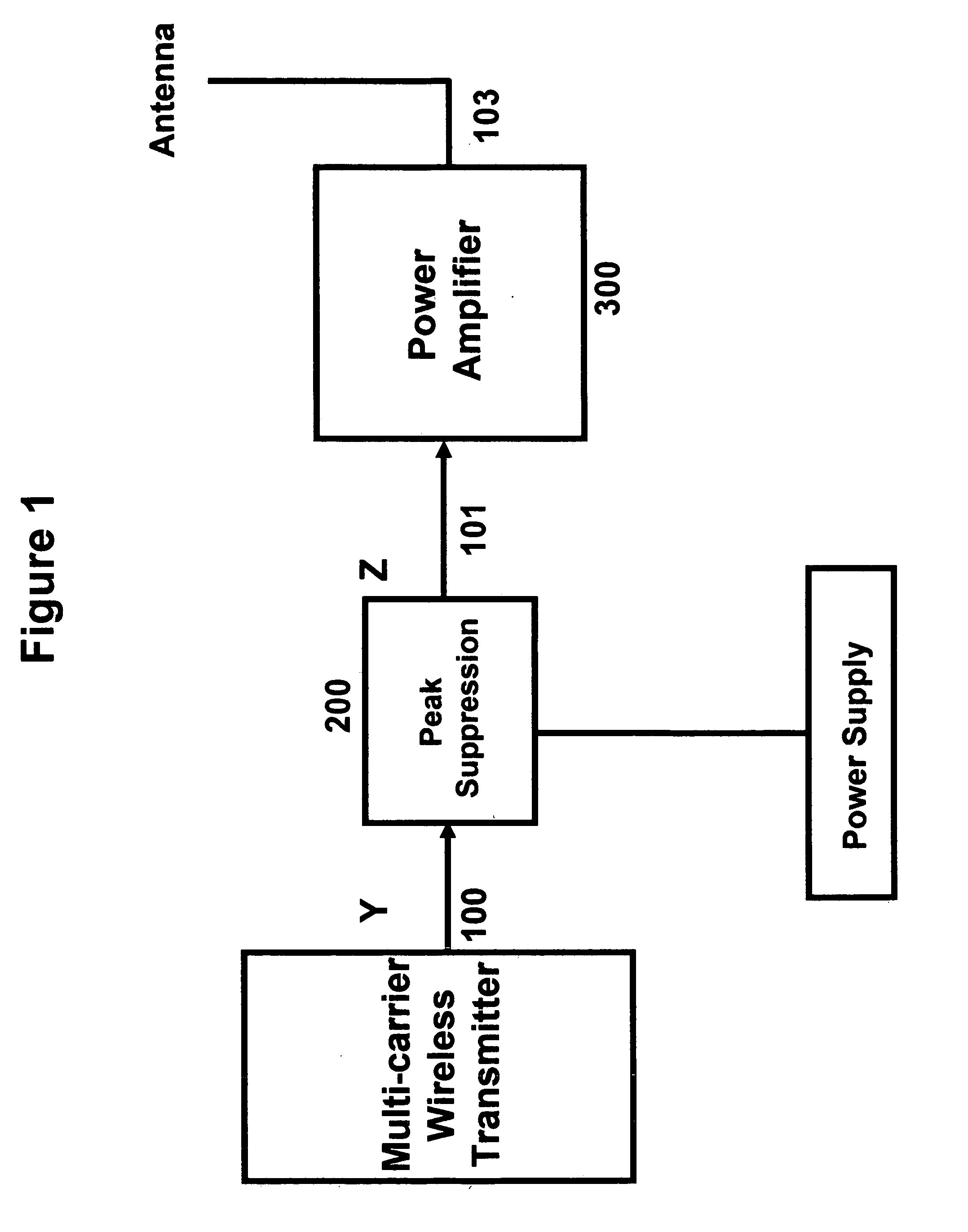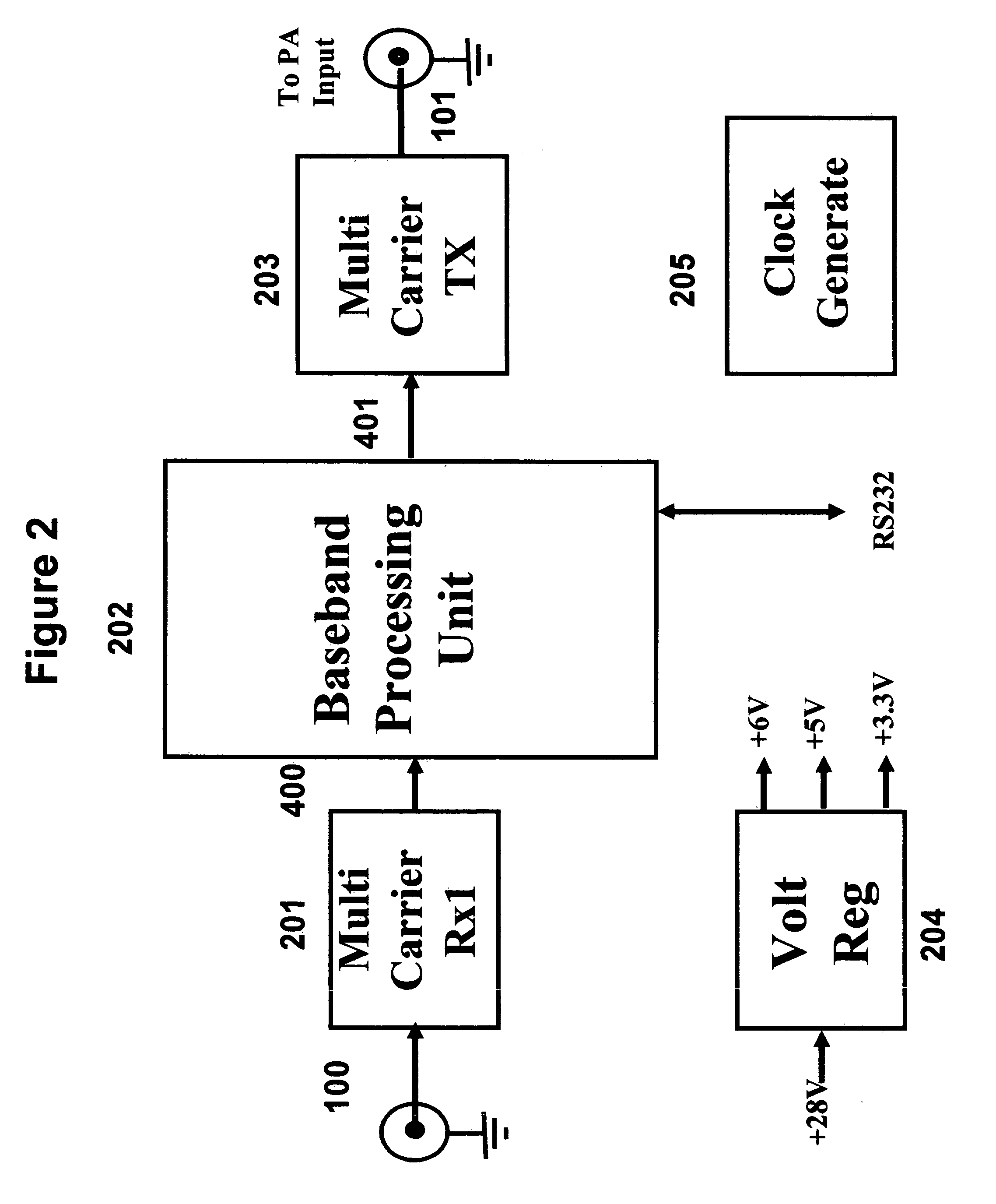Peak-to-average reduction technique for multi-carrier power amplifiers
- Summary
- Abstract
- Description
- Claims
- Application Information
AI Technical Summary
Benefits of technology
Problems solved by technology
Method used
Image
Examples
Embodiment Construction
[0006] In a first preferred embodiment the peak-to-average reduction circuit monitors the signal strength of the multi-carrier input signal channels using the input receiver and finds the frequency and channel number of the input signals. In a second preferred embodiment of the invention, the peak-to-average reduction circuit uses sub-harmonic sampling to convert multi-carrier RF or IF signals to digital baseband signal. In a third preferred embodiment the input signal is conditioned or peak suppressed using the peak-to-average reduction data stored in a lookup tables before being transmitted to the amplifier. In a fourth embodiment the input signal is used to create the lookup table. In a fifth embodiment the digital baseband signal is further down converted to produce the individual carrier baseband signal. In a six embodiment the individual baseband signals are clipped and phase rotated using the associated lookup table before being individually filtered and up converted to recon...
PUM
 Login to View More
Login to View More Abstract
Description
Claims
Application Information
 Login to View More
Login to View More - R&D
- Intellectual Property
- Life Sciences
- Materials
- Tech Scout
- Unparalleled Data Quality
- Higher Quality Content
- 60% Fewer Hallucinations
Browse by: Latest US Patents, China's latest patents, Technical Efficacy Thesaurus, Application Domain, Technology Topic, Popular Technical Reports.
© 2025 PatSnap. All rights reserved.Legal|Privacy policy|Modern Slavery Act Transparency Statement|Sitemap|About US| Contact US: help@patsnap.com



